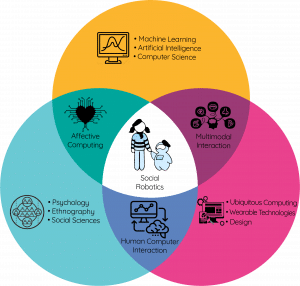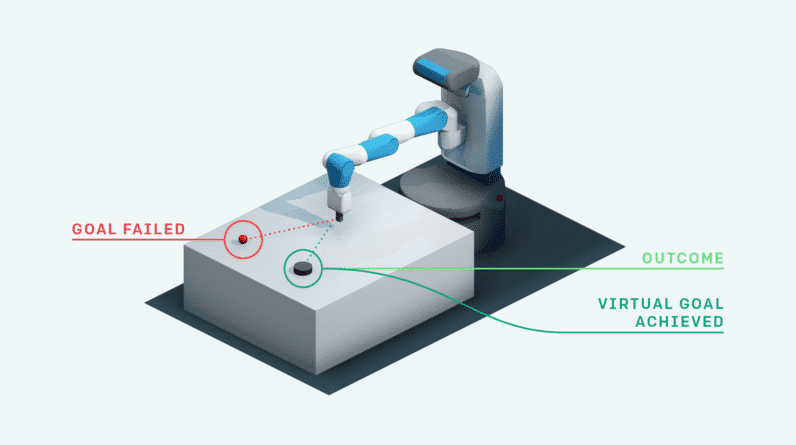In the fast-paced world of technology, the intersection of AI and predictive analytics has become increasingly significant. This article explores the fascinating realm of AI and how it is revolutionizing the way we anticipate trends and outcomes. By harnessing the power of advanced algorithms, AI is unlocking new possibilities for businesses and individuals alike, providing invaluable insights and predictions. Stay tuned to discover how AI is shaping our future and uncover the exciting potential that lies ahead.

Understanding AI and Predictive Analytics
What is AI?
AI, or Artificial Intelligence, refers to the simulation of human intelligence in machines that are programmed to think and learn like humans. It involves the creation of intelligent machines that can perform tasks normally requiring human intelligence, such as speech recognition, problem-solving, decision-making, and language translation.
What is Predictive Analytics?
Predictive Analytics is the use of historical data, statistical algorithms, and machine learning techniques to identify the likelihood of future outcomes based on patterns and trends. It involves the analysis of historical data to detect patterns and make predictions about future events or behaviors.
How do AI and Predictive Analytics work together?
AI and Predictive Analytics work together by combining the capabilities of AI algorithms and predictive modeling techniques to extract valuable insights from vast amounts of data. AI enables machines to learn and adapt from data, while Predictive Analytics uses statistical models to make predictions based on patterns identified in the data.
The importance of anticipating trends and outcomes
Anticipating trends and outcomes is crucial for businesses and organizations, as it allows them to make informed decisions, optimize processes, and gain a competitive advantage. By leveraging AI and Predictive Analytics, companies can gain insights into future trends, customer behavior, market conditions, and potential risks, enabling them to stay ahead of the curve and adapt their strategies accordingly.
The Benefits of AI and Predictive Analytics
Improved decision-making
The integration of AI and Predictive Analytics provides organizations with accurate predictions and insights that support decision-making processes. By analyzing historical data and identifying patterns, AI algorithms can assist in making informed decisions across various domains, including finance, marketing, healthcare, and supply chain management.
Enhanced efficiency and productivity
AI and Predictive Analytics help streamline processes and eliminate inefficiencies by automating tasks and workflows. Through the analysis of historical data, AI algorithms can optimize resource allocation, identify bottlenecks, and suggest improvements, leading to enhanced efficiency and productivity.
Cost optimization
By leveraging AI and Predictive Analytics, organizations can identify cost-saving opportunities and optimize their operations. Predictive models can analyze data to identify areas where costs can be reduced, such as predictive maintenance in manufacturing or optimizing inventory management, leading to significant cost savings.
Risk reduction
AI and Predictive Analytics provide organizations with the ability to identify and mitigate risks proactively. By analyzing historical data and detecting patterns, predictive models can anticipate potential risks and warn organizations in advance, enabling them to take preventive measures and minimize potential losses.
Identifying new opportunities
AI and Predictive Analytics can uncover hidden patterns and insights from data, enabling organizations to identify new opportunities and capitalize on them. By analyzing customer behavior, market trends, and industry data, organizations can identify untapped markets, emerging trends, and potential customer needs, allowing them to stay ahead of their competitors.

Applications of AI and Predictive Analytics
Financial forecasting
Predictive Analytics plays a crucial role in financial forecasting by analyzing historical financial data and identifying patterns to predict future market trends and investment opportunities. AI algorithms can analyze market conditions, economic indicators, and historical data to generate accurate forecasts and insights that assist financial institutions in making informed investment decisions.
Marketing and customer behavior analysis
AI and Predictive Analytics enable organizations to analyze vast amounts of customer data to gain insights into customer behavior, preferences, and purchase patterns. This allows businesses to personalize marketing campaigns, target specific customer segments, and optimize marketing strategies to maximize customer engagement and retention.
Healthcare and medical diagnosis
In the healthcare industry, AI and Predictive Analytics are revolutionizing medical diagnosis and patient care. Predictive models can analyze patient data, medical records, and genetic information to predict disease progression, identify high-risk patients, and recommend personalized treatment plans, leading to improved patient outcomes and reduced healthcare costs.
Supply chain optimization
AI and Predictive Analytics are transforming supply chain management by optimizing inventory management, demand forecasting, and logistics. Predictive models can analyze historical sales data, market trends, and supply chain data to predict demand patterns, optimize inventory levels, and streamline logistics operations, resulting in reduced inventory costs and improved customer satisfaction.
Predictive maintenance in manufacturing
AI and Predictive Analytics are reshaping the manufacturing industry by enabling predictive maintenance. By analyzing sensor data, machine performance data, and historical maintenance records, predictive models can identify patterns and anomalies to predict equipment failures and recommend proactive maintenance actions, reducing downtime, improving productivity, and optimizing maintenance costs.
Challenges and Limitations
Data quality and availability
One of the main challenges in AI and Predictive Analytics is the availability and quality of data. Inaccurate or incomplete data can lead to biased predictions and unreliable models. Organizations need to ensure data integrity, quality, and availability to achieve accurate and reliable predictions.
Ethical considerations
The ethical implications of AI and Predictive Analytics are a significant concern. As AI algorithms make decisions based on data, the ethical considerations surrounding the collection, use, and potential biases of data become crucial. Organizations must address ethical concerns and ensure the fair and ethical use of AI and Predictive Analytics.
Algorithm bias and fairness
AI algorithms are trained on historical data, which can inherently contain biases and unfairness. These biases can result in discriminatory outcomes and reinforce existing inequalities. Organizations need to develop strategies to identify and mitigate bias in their AI models to ensure fairness and inclusivity.
Lack of transparency
Another limitation of AI and Predictive Analytics is the lack of transparency in the decision-making process of AI models. Complex algorithms and black-box models can make it challenging to understand how decisions are reached. Organizations must strive for transparency and develop methods to explain AI models and their predictions.
Overreliance on AI and automation
While AI and Predictive Analytics offer significant benefits, there is a risk of overreliance on automation and AI decision-making. Organizations must remember that human judgment and oversight are still essential. AI should complement human decision-making rather than replace it completely.
The Role of Machine Learning in Predictive Analytics
What is Machine Learning?
Machine Learning is a subset of AI that enables systems to learn and improve from experience without being explicitly programmed. It involves the development of algorithms that can learn and make predictions or take actions based on data.
Types of machine learning algorithms
There are several types of machine learning algorithms, including supervised learning, unsupervised learning, and reinforcement learning. Supervised learning algorithms learn from labeled training data, unsupervised learning algorithms identify patterns in unlabeled data, and reinforcement learning algorithms learn through trial and error, receiving feedback on their actions.
Training and testing models
In the predictive analytics process, machine learning models are trained on historical data to learn patterns and relationships. The models are then tested on new data to evaluate their accuracy and performance. This iterative process allows for continual improvement of the models.
Feature selection and engineering
Feature selection and engineering involve identifying the most relevant variables or features from the data and transforming them into a format suitable for predictive modeling. This process helps to improve the accuracy and efficiency of predictive models.
Evaluating and improving models
Machine learning models need to be evaluated regularly to ensure their accuracy and effectiveness. Techniques such as cross-validation and performance metrics are used to assess the performance of the models. Models can be improved by fine-tuning hyperparameters, selecting different algorithms, or incorporating new data.
The Future of AI and Predictive Analytics
Increased integration in everyday life
AI and Predictive Analytics are expected to become increasingly integrated into everyday life, from smart homes and virtual assistants to personalized recommendations and autonomous vehicles. The convenience and efficiency offered by AI technologies will revolutionize various aspects of our daily lives.
AI as a service (AIaaS)
AI as a service (AIaaS) is a growing trend where AI capabilities are delivered as a service over the internet. This allows organizations to access AI tools and technologies without the need for extensive infrastructure or expertise, democratizing AI and making it more accessible.
Augmented Intelligence
Augmented Intelligence refers to the collaboration between humans and AI systems, where AI assists and enhances human capabilities rather than replacing them. This collaborative approach will empower individuals and organizations to achieve better outcomes in various domains.
Addressing ethical and privacy concerns
As AI and Predictive Analytics continue to advance, there is a growing need to address ethical and privacy concerns. Regulations and frameworks need to be established to ensure the responsible and ethical use of AI technologies while protecting individual privacy and data rights.
Advancements in predictive modeling techniques
The field of predictive modeling is constantly evolving, with advancements in algorithms, data analytics, and computing power. These advancements will lead to more accurate and efficient predictive models, further enhancing the capabilities of AI and Predictive Analytics.

Key Industries Harnessing AI and Predictive Analytics
Finance and banking
The finance and banking industry has been at the forefront of leveraging AI and Predictive Analytics. From fraud detection and credit risk assessment to algorithmic trading and customer support, AI technologies are transforming financial services, improving decision-making, and enabling personalized experiences for customers.
Retail and e-commerce
AI and Predictive Analytics play a significant role in the retail and e-commerce sector. These technologies enable personalized product recommendations, dynamic pricing optimization, demand forecasting, and inventory management, enhancing customer experiences and optimizing business operations.
Healthcare and pharmaceuticals
In the healthcare and pharmaceutical industries, AI and Predictive Analytics have the potential to revolutionize patient care, drug discovery, and medical diagnosis. From predictive modeling for disease progression to AI-assisted surgeries and personalized medicine, these technologies are transforming healthcare delivery and improving patient outcomes.
Manufacturing and supply chain
Manufacturing and supply chain management have benefited greatly from AI and Predictive Analytics. Predictive maintenance, process optimization, quality control, and supply chain optimization are some areas where AI technologies are enhancing efficiency, reducing costs, and improving product quality.
Transportation and logistics
AI and Predictive Analytics are driving innovation in the transportation and logistics industry. From route optimization and demand forecasting to autonomous vehicles and real-time tracking, these technologies are improving efficiency, reducing costs, and enhancing the overall transportation experience.
Emerging Trends in AI and Predictive Analytics
Real-time analytics and decision-making
Real-time analytics enables organizations to make data-driven decisions in real-time, allowing for faster response and adaptability. The integration of AI and Predictive Analytics with real-time data streams enables organizations to anticipate and react to events as they happen, leading to more efficient and effective decision-making.
Interpretability and explainability of AI models
As AI models become more complex, there is a growing demand for interpretability and explainability. It is essential to understand how AI models arrive at certain predictions or decisions. Techniques such as interpretable machine learning and model-agnostic explanations are gaining traction to address this need.
Advanced natural language processing (NLP)
Advancements in natural language processing (NLP) are enabling AI systems to understand and generate human language with increasing accuracy. NLP technologies are being applied in various domains, including customer service chatbots, virtual assistants, and sentiment analysis, enhancing natural human-computer interactions.
Automated machine learning (AutoML)
Automation is being introduced in the machine learning process with Automated Machine Learning (AutoML) tools and platforms. AutoML automates tasks such as feature selection, hyperparameter tuning, and model selection, making machine learning more accessible and efficient for organizations without extensive data science expertise.
Edge computing for decentralized AI
Edge computing involves processing data near the source instead of sending it to a centralized cloud infrastructure. This approach allows for faster data processing, reduced latency, and improved privacy and security. Edge computing is enabling decentralized AI, where AI models can run on edge devices, making AI capabilities available even without an internet connection.

Ethical Considerations in AI and Predictive Analytics
Bias and discrimination
AI models can inadvertently perpetuate biases and discrimination present in the data used for training. It is essential to address and mitigate biases to ensure fair and equitable outcomes. This requires diverse and representative data, careful algorithmic design, and ongoing monitoring and evaluation.
Privacy and data protection
AI and Predictive Analytics rely on vast amounts of personal data. Organizations must ensure that privacy and data protection regulations are followed to safeguard individuals’ privacy rights. Implementing proper data anonymization techniques, secure data storage, and user consent mechanisms are crucial for maintaining data privacy.
Responsibility and accountability
As AI systems make decisions that impact people’s lives, there is a need to establish responsibility and accountability frameworks. Organizations should ensure that there are processes in place to address errors, biases, and unintended consequences of AI systems, and that individuals have avenues to challenge and seek redress.
Transparency and interpretability
There is a growing demand for transparency and interpretability in AI systems to understand the basis for their predictions or decisions. Organizations should strive for transparency by providing explanations for AI models’ outputs and making the decision-making processes more interpretable.
Human oversight and decision-making
AI and Predictive Analytics should complement human decision-making and not replace it entirely. Human oversight is essential to ensure that critical decisions are not solely based on AI predictions. Humans should be involved in validating and interpreting AI outputs and making the final decisions.
Conclusion
AI and Predictive Analytics have immense potential to revolutionize various industries and transform the way organizations make decisions and operate. By leveraging the power of AI algorithms and predictive modeling techniques, businesses can gain valuable insights, anticipate trends, mitigate risks, and identify new opportunities. However, it is crucial to address the challenges and ethical considerations associated with AI and Predictive Analytics, ensuring responsible and equitable use. As AI technologies continue to advance, the future holds increased integration, augmented intelligence, and advancements in predictive modeling techniques, shaping a world where AI and Predictive Analytics are at the forefront of innovation and everyday life.






